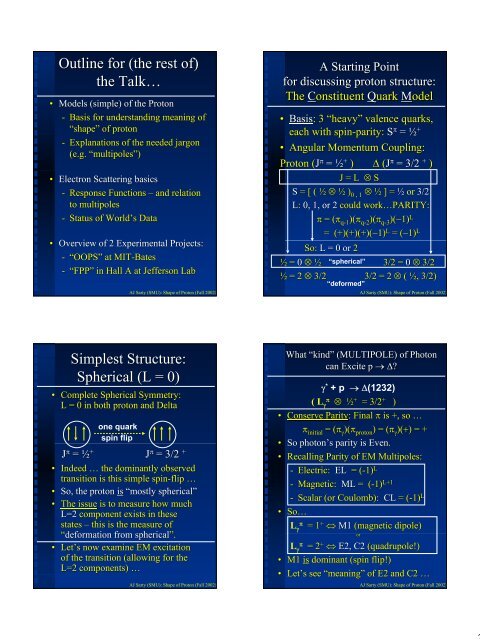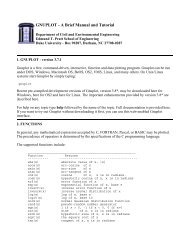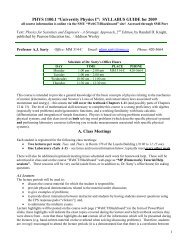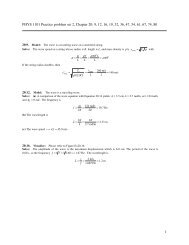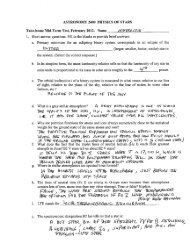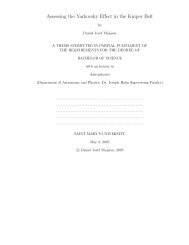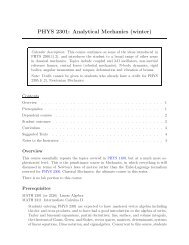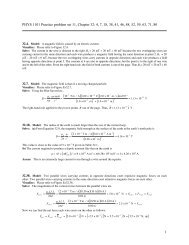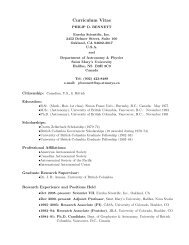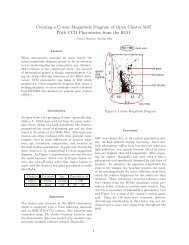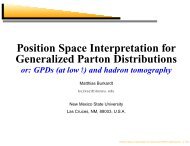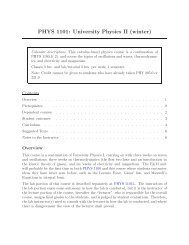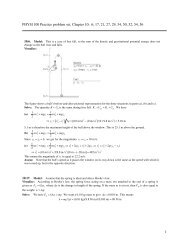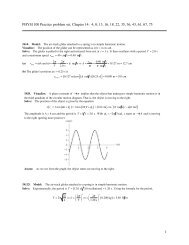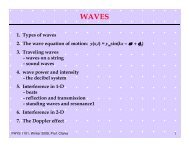Measuring the Shape Proton Measuring the Shape Proton
Measuring the Shape Proton Measuring the Shape Proton
Measuring the Shape Proton Measuring the Shape Proton
- No tags were found...
Create successful ePaper yourself
Turn your PDF publications into a flip-book with our unique Google optimized e-Paper software.
Outline for (<strong>the</strong> rest of)<strong>the</strong> Talk…• Models (simple) of <strong>the</strong> <strong>Proton</strong>- Basis for understanding meaning of“shape” of proton- Explanations of <strong>the</strong> needed jargon(e.g. “multipoles“multipoles”)• Electron Scattering basics- Response Functions – and relationto multipoles- Status of World’s Data• Overview of 2 Experimental Projects:- “OOPS” at MIT-Bates- “FPP” in Hall A at Jefferson LabAJ Sarty (SMU): <strong>Shape</strong> of <strong>Proton</strong> (Fall 2002)A Starting Pointfor discussing proton structure:The Constituent Quark Model• Basis: : 3 “heavy” valence quarks,each with spin-parity:parity: S π = ½ +• Angular Momentum Coupling:<strong>Proton</strong> (J(π = ½ + ) ∆ (J π = 3/2 + )J = L ⊗ SS = [ ( ½ ⊗ ½ ) 0 , 1 ⊗ ½ ] = ½ or 3/2L: 0, 1, or 2 could work…PARITY:π = (π(q-1 )(π q-2 )(π q-3 )(−1) L= (+)(+)(+)(−1) L = (−1)(LSo: L = 0 or 2½ = 0 ⊗ ½ “spherical” 3/2 = 0 ⊗ 3/2½ = 2 ⊗ 3/2 3/2 = 2 ⊗ ( ½, , 3/2)“deformed”AJ Sarty (SMU): <strong>Shape</strong> of <strong>Proton</strong> (Fall 2002)Simplest Structure:Spherical (L = 0)• Complete Spherical Symmetry:L = 0 in both proton and Deltaone quarkspin flipJ π = ½ + J π = 3/2 +• Indeed … <strong>the</strong> dominantly observedtransition is this simple spin-flip …• So, <strong>the</strong> proton is “mostly spherical”• The issue is to measure how muchL=2 component exists in <strong>the</strong>sestates – this is <strong>the</strong> measure of“deformation from spherical”.• Let’s now examine EM excitationof <strong>the</strong> transition (allowing for <strong>the</strong>L=2 components) …AJ Sarty (SMU): <strong>Shape</strong> of <strong>Proton</strong> (Fall 2002)What “kind” (MULTIPOLE) of Photoncan Excite p → ∆?γ * + p → ∆(1232)(L π γ ⊗ ½ + = 3/2 + )• Conserve Parity: : Final π is +, so …π initial = (π(γ )(π proton ) = (π(γ )(+) ) = +• So photon’s s parity is Even.• Recalling Parity of EM Multipoles:- Electric: EL = (-1)(L- Magnetic: ML = (-1)(L+1- Scalar (or Coulomb): CL = (-1)(L• So…L π γ = 1 + ⇔ M1 (magnetic dipole)orL π γ = 2 + ⇔ E2, C2 (quadrupole!)• M1 is dominant (spin flip!)• Let’s s see “meaning” of E2 and C2 …AJ Sarty (SMU): <strong>Shape</strong> of <strong>Proton</strong> (Fall 2002)


